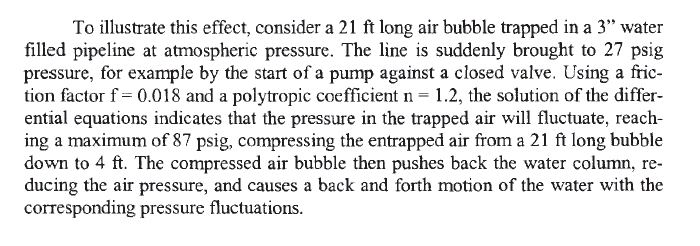sizgalil
Chemical
- Nov 4, 2009
- 17
Hi.
I read in "Piping and Engineering" by George Antaki the following example:

Can anybody explain how the trapped air pressure can rise above the hydraulic pressure?
Thanks?
I read in "Piping and Engineering" by George Antaki the following example:

Can anybody explain how the trapped air pressure can rise above the hydraulic pressure?
Thanks?
